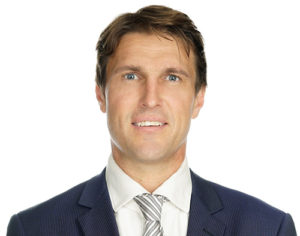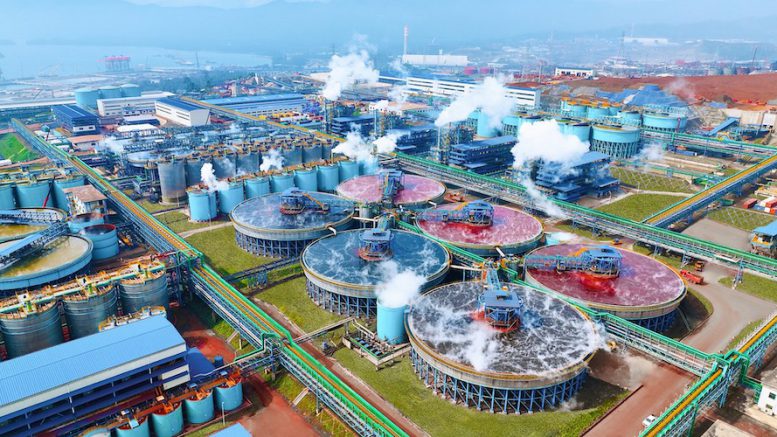In a market that has seen few winners in recent years, Australia’s Nickel Industries (ASX: NIC) continues to strengthen its position.
The company has been operating in Indonesia for over 15 years and went public in 2018 with an A$200-million (US$125-million) initial public offering. Since then, the company has rapidly expanded to become one of the world’s largest nickel producers, backed by its Chinese partner, Tsingshan subsidiary Shanghai Decent.
In the quarter to Dec. 31, Nickel Industries reported earnings before interest, tax, depreciation and amortization (EBITDA) of $72.4 million, which was impacted by a $20 million foreign exchange loss and limited sales of nickel ore in December after the company reached its 2024 quota.
“We made good money,” managing director Justin Werner told MINING.com. “If you actually take out the foreign exchange loss of US$20 million, plus the limited nickel ore sales in December, we probably lost another US$20 million there. It easily could have been over US$100 million.”
NIC shares fell to an 11-month low following the release of the quarterly report, which Werner attributed to market sentiment and weak nickel prices. “There’s probably people waiting to see what will happen with the US and China,” he said, as well as the company’s full-year results this month.
Shares in Nickel Industries closed 2.7% higher on Thursday in Sydney at A76¢ apiece, valuing the company at A$3.3 billion (US$2.1 billion). They’ve traded in a 52-week range of A62¢ to A$1.08.
Exciting year
Nickel Industries holds an 80% interest in the Hengjaya, Ranger, and Oracle rotary kiln electric furnace (RKEF) projects at the Indonesia Morowali Industrial Park (IMIP), the Angel RKEF project at the Indonesia Weda Bay Industrial Park, and an 80% stake in the Hengjaya mine. It has 10% of the Huayue Nickel-Cobalt (HNC) high-pressure acid leach (HPAL) project, and a 44% stake in the Excelsior Nickel-Cobalt (ENC) HPAL project, which is currently under construction.
“For us, this is an exciting year, because we have ENC commissioning, which allows us to produce nickel cathode, nickel and cobalt sulphate and mixed hydroxide precipitate, and for all of those currently, the margins are very strong,” he said.
The company’s 10% interest in the HNC HPAL project generated US$14.7 million in EBITDA for the quarter, setting a positive precedent for ENC, which is expected to come online in this year’s second half.
At Hengjaya, after reaching its quota of 9 million tonnes of ore ahead of the 2024 deadline, the company expects approval to more than double its quota to 19 million tonnes this year. The Hengjaya mine generated unaudited EBITDA of US$72 million in last year’s second half.
“We’re quite excited about what’s coming up this year,” Werner said. “Importantly, both of those are fully funded and both of them are making very, very strong margins.”
Next development
In September, Nickel Industries acquired three mining licenses comprising the Sampala project for US$63.2 million, most of which is payable next year.
Sampala, located 37 km from the company’s RKEF and HPAL operations, has an exploration target of 350 million to 700 million tonnes at 0.9-1.1% nickel, in addition to its 187-million-tonne resource.
“A billion tonnes at 1% is close to 10 million tonnes of contained nickel metal, which is two times the global (annual) nickel market consumption, so it’s huge,” Werner said. “Applying our margins for 2024, which was about US$12 a tonne, if you apply that to a billion tonnes, you can start to see the value of the Sampala project.”
Nickel Industries has submitted a mine plan and feasibility study for government approval, with an environmental study to follow. Capital costs are estimated at US$50 million, and development of a haul road has begun.
“I’m pushing the team for first production by the end of this year, but realistically, it might be early 2026,” Werner said.
Indonesia nickel boom
Nine years ago, Indonesia produced just 5% of the world’s nickel, according to Benchmark Mineral Intelligence. By 2023, it accounted for half of global output, with forecasts suggesting a 65% market share by the end of the decade.

The nickel market has been in surplus for several years and is expected to remain in surplus until later this decade.
The Indonesian government has introduced production quotas to support domestic producers. In mid-2024, the quota was set at 240 million tonnes but has since been reduced to 200 million tonnes for this year, forcing Indonesian smelters to import ore from the Philippines.
Werner said companies had to apply for permits to produce a certain amount of nickel in that year, but approvals were often delayed. The process has recently been changed to only require a new permit every three years, with the government increasing its scrutiny on environmental practices.
“Where we have an advantage over other producers is that by being fully integrated between our mine and our processing operations, we’re self-sufficient in ore so we’re not at risk of ore shortages or premiums being paid because of ore shortages,” he said.
Shaking the ‘dirty’ nickel tag
Indonesian nickel has often been described as “dirty” by Western producers, including by Wyloo Metals CEO Luca Giacovazzi.
“That was a lot of noise to try and, firstly, tarnish the industry in Indonesia, but they were seeking to try and get a green premium from buyers, because, according to them, they were greener, but there was absolutely no justification that they were greener,” Werner said.
“We talked to all of the major EV and battery makers globally, across North America and Europe. EV sales are struggling. Margins aren’t great. As long as you meet their ESG requirements, then these guys just aren’t interested in paying a premium, understandably, and this whole idea of shaming the consumer by putting labels on saying this is a high carbon intensity car – last time I checked, you don’t shame consumers into buying things.”
Werner said nickel pig iron, produced by its RKEF operations, produced around 60 tonnes of carbon per tonne of nickel, but the new generation of HPAL projects was much lower. The HNC operation produced 6.97 tonnes of carbon per tonne of nickel, while the average of the company’s Australian peers is more than 11 tonnes, he said.
“These things are actually the lowest carbon intensive, cleanest nickel units produced anywhere in the world, and we are aiming to further reduce from 6 tonnes.”
Nickel Industries is building Indonesia’s largest solar project and is ramping up the use of electric trucks and mining equipment.
Western producers’ woe
The weak nickel price led to the collapse of Australia’s nickel sector last year, including the closure of BHP’s (NYSE, LSE, ASX: BHP) Nickel West division.
Glencore’s (LSE: GLEN) Murrin Murrin mine in Western Australia is the only remaining nickel operation in Australia.
Werner said his company is competitive due to lucrative tax incentives from the Indonesian government and the support of Shanghai Decent.
“Our Chinese partner offers us a unique set of guarantees that you don’t get anywhere else,” he said. “We have a nameplate guarantee. We have a capex guarantee, so we’re immune from capex blowouts, which are pretty common [elsewhere].”
Werner says it will be difficult for Western producers to compete. HPALs produce nickel at US$5,000 to US$7,000 per tonne and enjoy good margins when selling for $15,000 per tonne, he said.
“There’s really been a significant cost reset,” he said.
With cash costs of US$18,000 to US$22,000 per tonne, Werner says the nickel price will need to be much higher over a sustained period for Australian producers to re-enter the market.
“You can’t run an operation that’s going on care and maintenance every couple of years,” he said.
“Longer term, it’s going to be driven by EV penetration improving, and certainly stainless steel consumption in India is growing, so there’s market growth there.
“There’s certainly some bright spots up ahead, but near term, the next couple of years, I wouldn’t expect to see any of them coming back online.”


Be the first to comment on "Nickel Industries makes money in weak market"